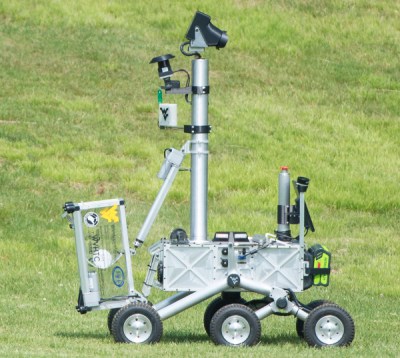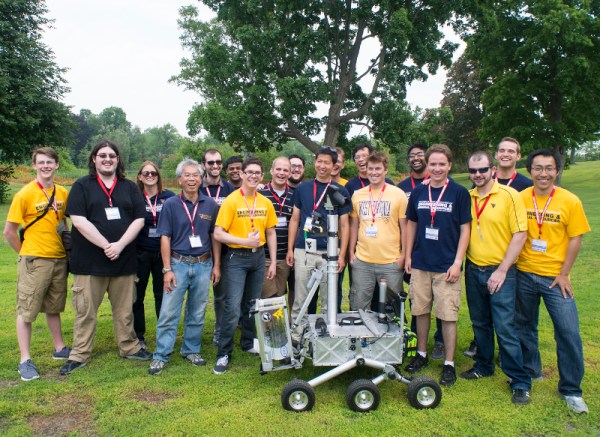Could you build a robot to search for and collect samples on Mars? Team Cataglyphis from West Virginia University did. They won $100,000 last June from a prize pool of $1.5 million and are being honored in the US Senate on September 21st. The team, along with many others, have competed each June since 2012 during the NASA Sample Return Robot Challenge held at Worcester Polytechnic Institute in Worcester, Massachusetts.
The SRR, as it’s called by the teams, is a two phase competition. In Phase 1 the robot must leave the starting platform, collect a pre-cached sample, and return the sample to the starting platform. Phase 2 is more difficult because the robot must not only collect the pre-cached sample but search a park for 9 additional samples. The park is a typical urban park about 1.5 football fields large with grass, trees, and park benches as obstacles.

The Mountaineers, as they were known in the robot pits, are the only team to collect two samples during the competition. Another team from Los Angeles, Team Survey, was the first to complete Phase 1 in 2013, but only managed, in 2015, to collect the pre-cached sample during Phase 2.
All the teams who have competed are waiting to see if there will be a competition in 2016 and I am among them. After the break you’ll find a couple of videos of the 2015 competition. One is about the Mountaineers but the other us from NASA 360. If you look quickly during the opening sequence of the NASA 360 video you’ll see two small black robots. One is on its side spinning its wheels; the other jammed under a rock. Those are my rovers from the 2013 SRR. I’m chasing the dream of a winning extra-planetary rover and you should too!
Continue reading “Robot Team Wins $100,000 In June; Visits US Senate In September”











